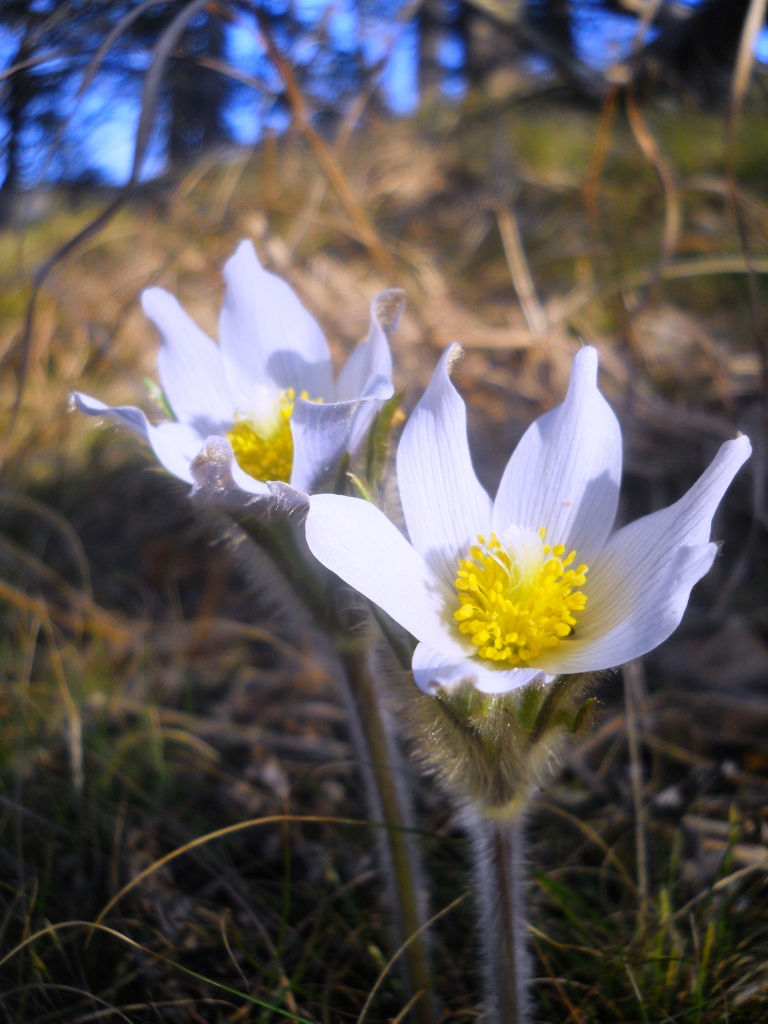Spring Wildflowers
- briangfcc
- Apr 22, 2022
- 3 min read
Springtime is when images inside the forest change, but the frame stays the same. It is a period when trees are kaleidoscopes of hope, an oil canvas of a dozen different greens. A hopeful bud on a branch turns many leaves into one brave tree. Found growing under these tall oxygen machines are tiny wildflowers called Spring Ephemerals. Spring ephemerals are short lived life-forms that are in a photosynthetic race against all other forest vegetation including the trees themselves. Often starting in March, the plants open themselves up to anything, hoping to capture as much sunlight and pollinators as possible. This year's cold temperatures have pushed the wildflower bloom back 2-3 weeks later than years past.
Though April can be a harsh time of the year, it is also when the fairest of wildflowers glow. Just as the Redwing Blackbird is the harbinger of spring in flight, so too is the Snow Trillium a messenger of light. On an early spring drive to work, the glare produced by the warming sun and melting snow was extraordinarily bright, causing me to remember where a roadside patch of Snow Trilliums grow. Upon arrival, I am greeted by an elegant unfolding of the three pearl white petals for which Snow Trillium is named. Trilliums are simple in their appearance, but a bit strong in aroma. Like most other early wildflowers, they emit a coarse smell to attract young season pollinators such as beetles and flies. The smell of the first open Trillium bending towards the warm spring sun is powerful enough: never mind the long dark winter it has had to overcome.

Snow Trillium is one of Iowa's First Wildflowers to bloom
Springtime is when nature is full of charm. Every April, the allure of seeing a Pasque Flower in bloom forces me to leave work early. This flower blooms around Easter time hence the name "Pasque" (meaning "like Paschal," relating to Passover/Easter time). Typically found in Iowa’s Tallgrass Prairies, Pasque flowers will also grow on high bluff top openings called “goat prairies” (this term refers to a hill so steep that it was thought only goats could graze on it). Up on goat prairies, dozens of plant, animal and insect species interact with each other to make up a truly unique habitat. Luckily, one of my close friends has the agility of a goat and after scaling a limestone ridge along the Turkey River he clued me into a patch of “ tiny, amazing wildflowers” he had never seen before.
The next workday I leave early to begin a wildflower treasure hunt. Having no map and only my friend’s descriptive words, I deliberate how to find a flower I’ve never seen. As I amble through the sunny April woods, a few ephemeral clues appear: Hepaticas, Bloodroots, Spring Beauties, noble wildflowers that never make the evening news.

Hepatica comes in many different shades of color
Thankfully, the climb is not too daunting and I make it to the ridge quicker than expected. On top of the bluff , under a blue sky, thick mats of small edged plants called sedges make the ground feel like shag carpet. Chorus frogs are calling in the distance. Twisting braches of Eastern Red Cedar trees are teeming with green, blue and yellow organisms called lichens. Though they are a combination of a fungus and algae, lichens live as one plant, and are simply using the Cedar trees to connect themselves. Without knowing their names, I admire the lichens until a tiny, fuzzy flower catches my attention.
Like an ear that was just whispered a secret, my eyes and jaw drop to the ground. On hands and knees, I measure the plant to be no more than two inches tall and notice the flower’s stalk is full of tiny, white, silky hairs. These smooth “hairs” are the plant’s adaptation to keep it warm during the cold days of spring. The flower has six beautiful white sepals that contain parallel veins, which lead into its bright yellow stamens. Upon further scientific investigation, I learn this mystery flower is indeed a new species for my records called Pasque Flower. I will always value the Pasque for its ability to make me forget about winter, and associate it with the radiance of a great friend who led me to the origin of discovery.

Pasque flower blooming in the sun




コメント